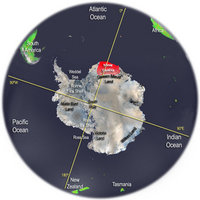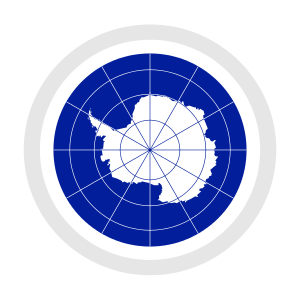Third German Antarctic Expedition
Preparations
In July 1938, Captain Alfred Ritscher received a mandate to launch preparations for an Antarctic expedition and within a few months he managed to bring about logistics, equipment and organizational measures for a topographical and marine survey expedition. Whale oil was then the most important raw material for the production of margarine and soap in Germany and the country was the second largest purchaser of Norwegian whale oil, importing some 200,000 tons annually. Dependence on imports and the forthcoming war was considered to put too much strain on Germany's foreign currency reserves. Supported by whaling expert Otto Kraul marine explorations were to be undertaken in order to set up a base for a whaling fleet and aerial photo surveys were to be carried out to map territory.
With only six months available for preparatory work, Ritscher had to rely on the antiquated MS Schwabenland ship and aircraft of Deutsche Lufthansa's Atlantic Service, with which a scientific program along the coast was to be carried out and retrieve biologic, meteorologic, oceanographic and geomagnetic studies. By applying modern aerophotogrammetric methods, Aerial surveys of the unknown Antarctic hinterlands were to be carried out with two Dornier Do J II seaplanes, named Boreas and Passat, that had to be launched via a steam catapult on the MS Schwabenland expedition ship. After urgent repairs on the ship and the two seaplanes, the 33 expedition members plus a crew of 24 on the Schwabenland left Hamburg on December 17, 1938.
Expedition

The Expedition reached the Princess Martha Coast on January 19, 1939, and was active along the Queen Maud Land coast from 19 January to 15 February 1939. In seven survey flights between January 20 and February 5, 1939, an area of approx. 350.000 km (135.136 sq mi) was photogrammetrically mapped. Previously unknown ice-free mountain ranges, several small ice-free lakes were discovered in the hinterland. The ice-free Schirmacher Oasis, which now hosts the Maitri and Novolazarevskaya research stations, was spotted from the air by Richard Schirmacher (who named it after himself). At the turning points of the flight polygons, 1.2 m (3.9 ft) long aluminum arrows, with 30 cm (12 in) steel cones and three upper stabilizer wings embossed with swastikas were dropped in order to establish German claims to ownership (which, however, was never raised). During an additional eight special flights, in which Ritscher also took part, particularly interesting regions were filmed and taken with color photos. The team flew over an area of about 600.000 km (231.661 sq mi). Around 11,600 aerial photographs were taken. Biological investigations were carried out on board the Schwabenland and on the sea ice on the coast. However, the insufficient equipment did not allow sled expeditions to the ice shelf or landings of the flying boats in the mountains. All explorations were carried out without a single member of the expedition having entered the inner territory.
The region between 10 ° W and 15 ° E was named New Swabia (Neuschwabenland) by the expedition leader. In the meantime, the Norwegian government had found out about the German Antarctic activities after the wife of the deputy expedition leader Ernst Herrmann had informed Norwegian geologist Adolf Hoel. On January 14, 1939, the Norwegian government declared the entire sector between 20 ° W and 45 ° E Norwegian territory (Queen Maud Land) without defining its southern extent.
On February 6, 1939, the expedition embarked on its return voyage, left the coast of Antarctica and carried out oceanographic research in the vicinity of Bouvet Island and Fernando de Noronha. At the request of the Navy High Command, crew members landed on the Brazilian island of Trindade on March 18 to check whether submarines could be supplied with fresh water and food without being noticed. The landing crew was shipwrecked in a small bay and had to be rescued. Since the landing had taken place in the strictest secrecy, Ritscher did not include the event in his final printed report. On April 11, 1939, the Schwabenland arrived in Hamburg.
Geographic features mapped by the expedition

As the area was first explored by a German expedition, the name New Swabia and German names given to its geographic features are still used on many maps. Some geographic features mapped by the expedition were not named until the Norwegian-British-Swedish Antarctic Expedition (NBSAE) of 1949–1952, led by John Schjelderup Giæver. Others were only named after they were remapped from aerial photos taken by the Norwegian Antarctic Expedition of 1958–1959.
- Ahlmann Ridge
- Alan Peak
- Aurdalsegga Ridge
- Austvorren Ridge
- Boreas Nunatak
- Borg Massif
- Cape Sedov
- Conrad Mountains
- Dalsnatten Crag
- Drygalski Mountains
- Dvergen Hill
- Dyna Hill
- Filchner Mountains
- Fjellimellom Valley
- Fimbul Ice Shelf
- Gamaleya Rock
- Gessner Peak
- Gburek Peaks
- Gneiskopf Peak
- Gockel Ridge
- Habermehl Peak
- Herrmann Mountains
- Høghamaren Crag
- Horgebest Peak
- Hortebrekka Slope
- Horteflaket Névé
- Humboldt Mountains
- Isdalen Valley
- Isdalsegga Ridge
- Isfossnipa Peak
- Ising Glacier
- Isingsalen Saddle
- Isingufsa Bluff
- Istind Peak
- Kal'vets Rock
- Knut Rocks
- Kraul Mountains
- Kruber Rock
- Kvamsgavlen Cliff
- Kvitkleven Cirque
- Kvitskarvhalsen Saddle
- Låghamaren Cliff
- Lake Untersee
- Luna-Devyat' Mountain
- Mount Dallmann
- Mount Dobrynin
- Mount Krüger
- Mount Neustruyev
- Mount Zimmermann
- Mount Zuckerhut
- Mühlig-Hofmann Mountains
- New Swabia
- Orvin Mountains
- Payer Mountains
- Penck Trough
- Per Rock
- Petermann Ranges
- Preuschoff Range
- Rømlingsletta Flat
- Rindehallet Slope
- Ritscher Peak
- Ritscher Upland
- Saetet Cirque
- Sandeggtind Peak
- Schirmacher Oasis
- Schirmacher Ponds
- Shatskiy Hill
- Sjøbotnen Cirque
- Skaret Pass
- Skeidskar Gap
- Skimten Hill
- Slithallet Slope
- Sørskeidet Valley
- Stabben Mountain
- Steinbotnen Cirque
- Storeidet Col
- Storkvarvet Mountain
- Storsåtklubben Ridge
- Südliche Petermann Range
- Sverdrup Mountains
- Sverre Peak
- Terningen Peak
- Tindeklypa
- Torgny Peak
- Tysk Pass
- Utrista Rock
- Vestskotet Bluff
- Vorposten Peak
- Weyprecht Mountains
- Wohlthat Mountains
- Zhil'naya Mountain
- Zwiesel Mountain
Scientific evaluation
Until 1942 pioneer geodesist Otto von Gruber produced detailed topographical maps of eastern New Swabia at a scale of 1: 50,000 and an overview map of all explored territories. Among the newly discovered areas were, for example, the Kraul Mountains, named after whaling expert and pilot Otto Kraul. The evaluation of the results in western New Swabia was interrupted by World War II and a large part of the 11,600 oblique aerial photographs were lost during the war. In addition to the images and maps published by Ritscher, only about 1100 aerial photos survived the war, but these were only rediscovered and evaluated in 1982. The results of the biological, geophysical and meteorological investigations were only published after the war between 1954 and 1958. Captain Ritscher did in fact prepare another expedition with improved, lighter aircraft on skids, which however was never carried out due to the outbreak of the Second World War.
Public perception

As a result of great secrecy and relatively little time for preparation, the enterprise completely escaped any advanced public attention as the MS Schwabenland embarked unnoticed.
The first report of the expedition was telegraphed only during the return journey from Cape Town to Helmut Wohlthat, who published a press release on March 6, 1939. As in Great Britain the Daily Telegraph and in the USA the New York Times reported on the expedition in reference to the Norwegian occupation of the area, only the Hamburg local press took notice of the expedition's return to Germany. On May 25, 1939, the Berliner Illustrirte Zeitung magazine published a small-scale map of the mountains discovered and the flight polygons without authorization by the expedition leader. The map was drawn by the aircraft mechanic Franz Preuschoff and is as such referred to as the "Preuschoff map". This map was incorporated in the 1939 1: 10,000,000 scale map of Antarctica by Australian cartographer E. P. Bayliss.
A reference to the expedition was posted in the Berlin Zoological Garden in front of the Emperor penguin enclosure. The penguins had been caught by Lufthansa flight captain Rudolf Mayr, flight mechanic Franz Preuschoff and zoologist Erich Barkley and arrived in Cuxhaven on April 12, 1939. The expedition geologist Ernst Herrmann, published the only popular science book for a wider audience for more than 60 years in 1941. Due to the lack of information during the following decades, myths and conspiracy theories eventually developed around the expedition and Neuschwabenland.
Although Germany issued a decree about the establishment of a German Antarctic Sector called New Swabia after the expedition's return in August 1939 no official territorial claims were ever advanced for the region, abandoned in 1945 and never revoked since. No whaling station or other lasting structure was built by Germany until the Georg von Neumayer Station, a research facility, established in 1981. The current Neumayer Station III is also located in the region.
New Swabia is now a cartographic area of Queen Maud Land which is administered by Norway as a dependent territory under the Antarctic Treaty System by the Polar Affairs Department of the Ministry of Justice and the Police.
Books
Ice Reich by William Dietrich (Warner Books, October 1998) ISBN 0-446-52339-9
See also
References
- ^ Eric Niiler. "Hitler Sent a Secret Expedition to Antarctica in a Hunt for Margarine Fat". A&E Television Networks, LLC. Retrieved February 27, 2021.
- ^ C. P. Summerhayes. "Hitler's Antarctic Base: The Myth and the Reality". University of Cambridge. Retrieved February 27, 2021.
- ^ Luke Fater (November 6, 2019). "Hitler's Secret Antarctic Expedition for Whales". Atlas Obscura. Retrieved February 27, 2021.
- ^ Lüdecke, Cornelia (2021). Germans in the Antarctic. Springer Nature. pp. 155–. ISBN 978-3-030-40924-1.
- ^ Andrew J. Hund (14 October 2014). Antarctica and the Arctic Circle: A Geographic Encyclopedia of the Earth's Polar Regions [2 volumes]. ABC-CLIO. pp. 303–. ISBN 978-1-61069-393-6.
- ^ William James Mills (2003). Exploring Polar Frontiers: M-Z. ABC-CLIO. pp. 552–. ISBN 978-1-57607-422-0.
- ^ "Norwegian-British-Swedish Antarctic Expedition". Australian Antarctic Division. July 10, 2009. Archived from the original on October 3, 2009. Retrieved March 21, 2021.
- ^ Claude Cowan (September 20, 2002). "Norwegian-British-Swedish Antarctic Expedition, 1949-1952". Scott Polar Research Institute. Retrieved March 21, 2021.
- ^ "Norway Station 1956-1960" (PDF). Norsk Polarhistorie. Retrieved March 21, 2021.
- ^ Cornelia Lüdecke; Colin Summerhayes (15 December 2012). The Third Reich in Antarctica: the German Antarctic Expedition, 1938-39. CreateSpace Independent Publishing Platform. ISBN 978-1-72091-889-9.
- ^ Deutsche hydrographische Zeitschrift: Ergänzungsheft. Reihe B. Deutsches Hydrographisches Institut. 1980.
- ^ Wilhelm Filchner; Alfred Kling; Erich Przybyllok (1994). To the Sixth Continent: The Second German South Polar Expedition. Bluntisham Books. ISBN 978-1-85297-038-3.
- ^ Rainer F. Buschmann; Lance Nolde (26 July 2018). The World's Oceans: Geography, History, and Environment. ABC-CLIO. pp. 84–. ISBN 978-1-4408-4352-5.
- ^ Heinz Schön (2004). Mythos Neu-Schwabenland: für Hitler am Südpol : die deutsche Antarktisexpedition 1938-39. Bonus-Verlag. ISBN 978-3-935962-05-6.
- ^ "Queen Maud Land". Encyclopædia Britannica. Retrieved 25 April 2011.
External links
- Photographs of the MS Schwabenland and its seaplanes (in German)
- More photographs of the MS Schwabenland (in German)
- Erich von Drygalski and the 1901–03 German Antarctic Expedition, Scott Polar Research Institute
- Wilhelm Filchner and the 1911–12 German Antarctic Expedition, Scott Polar Research Institute
- Kartographische Arbeiten und deutsche Namengebung in Neuschwabenland, Antarktis

